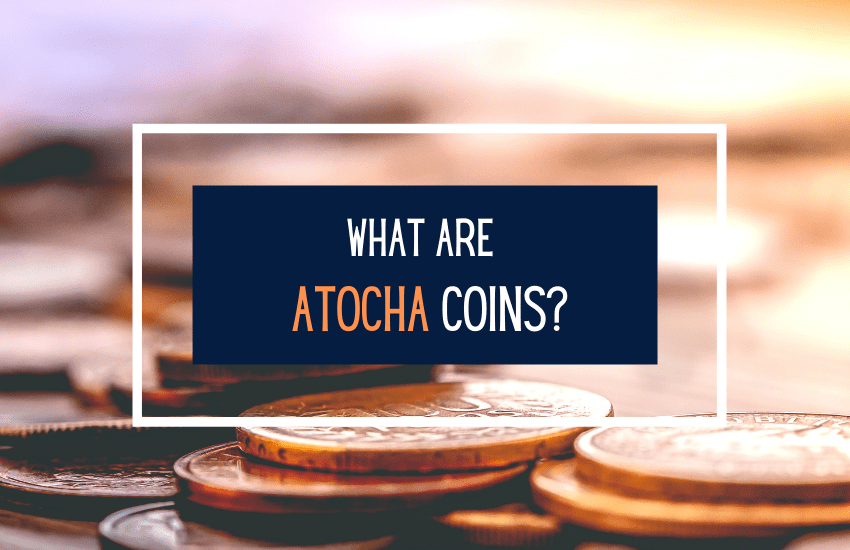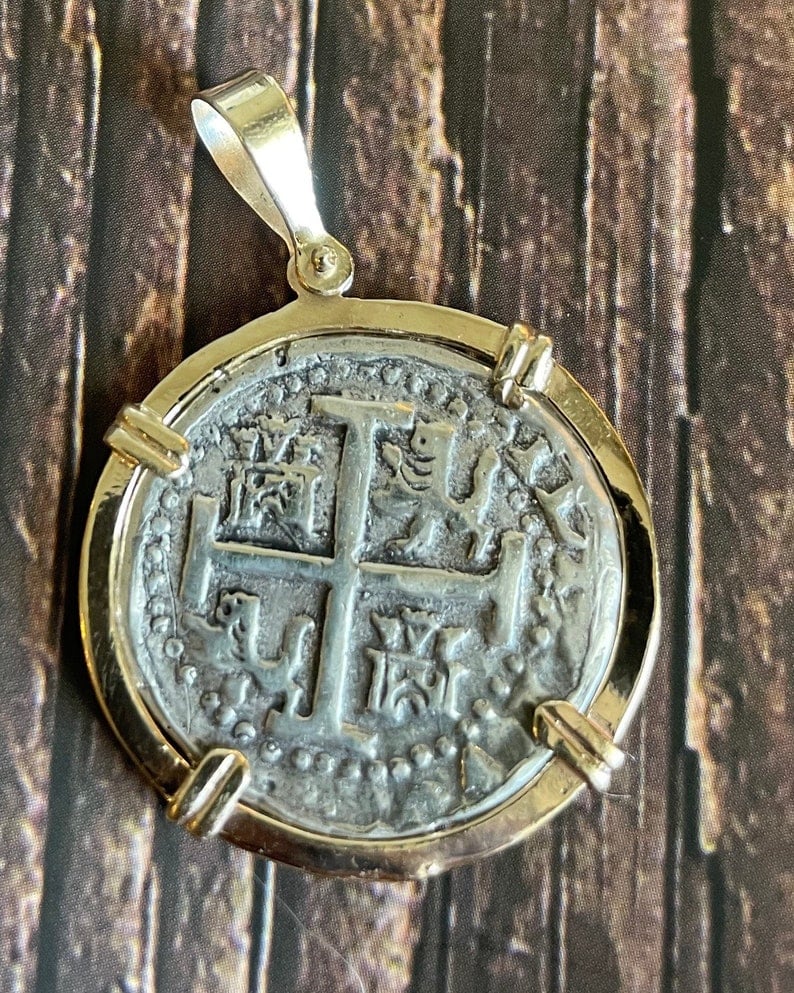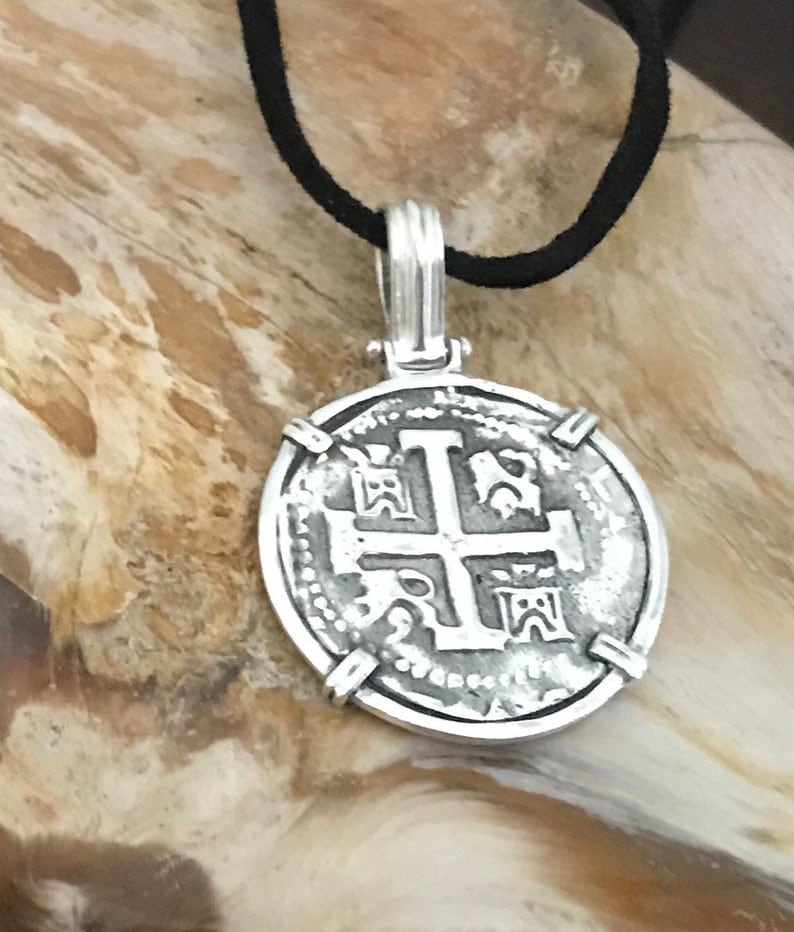
Table of Contents
Atocha coins may look like worthless old pieces of metal to a less knowledgeable person, but to anyone who knows about antiques and history, these are valuable pieces of history comparable only to a few others.
History of Atocha Coins

The term “Atocha Coin” is used in reference to gold and silver coins that made up part of the cargo of the ship Nuestra Senora de Atocha. Often shortened to “The Atocha”, this rare ship belonged to King Philip IV’s Tierra Firme, and is the best-known vessel of the fleet it belonged to. The fleet eventually met a bad end and has been declared the “most valuable shipwreck” in history.
The Cargo of Treasure
In 1622, King Philip IV’s Tierra Firme’s fleet that carried tons of treasure left Havana for the New World of Spain. Aboard the Atocha were numerous prized items, but the ship is valued for carrying 40 tons of silver and gold, Venezuela pearls, and about 70 pounds of the highly prized Colombian emeralds.
The gold coins had been minted in Spain, and the over 200,000 silver coins had been minted in Mexico, Potosi, and Lima and hand stamped in a manner that made them unique and easily identifiable.
Disaster Strikes the Fleet
Each ship of the fleet was said to have been loaded with so much treasure that it took so long to be loaded, resulting in a six-week delay in its departure from Havana. The Atocha was loaded with silver, gold, and emeralds.
The delay subsequently caused them to run into a hurricane near Florida Keys on the reef between Dry Tortugas and Key West on September 6, 1922. The hurricane caused damage to eight of the ships, the Atocha included, with only five people from the Atocha surviving the disaster.
The Most Valuable Shipwreck of All Time
Recovering the lost cargo would have been difficult in any situation. Still, the recovery of the Atocha cargo was made even more difficult by another hurricane that hit the area exactly a month after the first one, leading the Atocha to be declared the most valuable shipwreck of all time by the Guinness Book of Records. The treasure is estimated to be worth around $400 million. These events birthed a series of treasure hunters which aimed to find the lost riches of the Atocha fleet.
Mel Fisher Finds the Shipwreck
The treasure remained at the bottom of the ocean until 1985, 300 years later, when it was finally discovered by Mel Fisher, a former chicken farmer turned treasure hunter. Mel had spent years searching for the treasure. Each day, he would declare, “Today’s the day!” until eventually he was right. He soldiered on despite his consistent tough luck, which included the demise of three of his crew members.
Fisher would go on to fight the State of Florida, which wanted 25% of the treasure. He eventually won the case and was awarded rights to all the treasure found on the Atocha. Even today, treasure from the shipwreck is still being found.
Atocha Coin Identification
While Atocha coins are generally similar, there are some minor differences based on where they were minted. The main similarity is the shield stamped on one side of the coins. The Hapsburg Shield identify the lands that were controlled by the Hapsburg kings, starting with King Philip II in 1556 and ending with King Charles II in 1700.
The difference, however, lies in the cross on the other end of the coin.
- The Florenzada Cross, which looks like a big plus sign with flares at the ends and topped with spheres similar to this coin, is indicative of the coins minted in Mexico.
- The Greek Cross, as shown in this coin, which looks like two intersecting lines, is indicative of the coins minted in Lima and Potosi.
Overall, the coins recovered are graded based on the condition they were found in as follows:
- Grade 1 Atocha coins have clearly visible stamps on both sides. This is because they were retrieved from the innermost part of the treasure chest, meaning they weren’t damaged much by the salty water. These are valued at around $1595 – $2500 depending on the extent of the damage.
- Grade 2 Atocha coins are not as clear as Grade 1. These may show either the cross, the shield, the mintmark, the assayer mark, or the denomination. However, rarely will they show all marks at once. These usually go for around $1095 but can be more or less depending on the extent of damage on them.
- Grade 3 Atocha coins are usually more damaged than the first two grades but are still in good shape. Sometimes, the corrosion only shows on one side, while the other is still relatively undamaged. What makes them valuable is the visibility of either the denomination, the mintmark, or the assayer mark. These usually go for around $995, depending on how much of the coin is visible.
- Grade 4 Atocha coins are the most damaged of the find. They are usually extremely corroded but are still quite valuable. The price of these usually depends on how much of the coin is still left.
Atocha Coin Replicas

Seeing as most of the coins salvaged from the wreckage were damaged, silver from the treasure chest is currently used to mint replicas of Atocha coins. The silver used for this was donated to the History Department at the University of Florida by Dr. Eugene Lyon, the historian whose research helped Mel Fisher discover the treasure.
Even though minted recently, these are considered a valuable part of history, because the silver comes from the original load of the Atocha.
Atocha Coin Jewelry
Because of their historical value, jewelers have taken to using Atocha coins, pieces of these coins, or Atocha coin replicas to make pendants, earrings, bracelets, rings, and cuff links.
Sometimes the jewelry is sold as it is, and other times they are encased with silver or gold to make them even more valuable. Depending on the design of the jewelry, the pieces are priced at between $20 and $3000.
Real vs. Fake Atocha Coin
As with any other historical valuables, there is a sea of fake Atocha coins being peddled in the market. It is therefore important to know how to differentiate real from fake coins to avoid being ripped off. Since no two coins look exactly alike as they were struck by hand when being minted, a big part of how to identify the coins is based on the weight of the originally minted coins.
Originally, the silver coins were measured in reales, each measured in onzas, where one onza equaled 28 grams. There were 6 denominations as follows: 8 reales, 4 reales, 2 reales, 1 real, ½ real, and ¼ real. Each was made to be half the weight of the preceding denomination.
Gold coins, on the other hand, were measure in escudos, with one escudo equaling two 8 reale coins. The gold coin denominations were 8 escudos, 4 escudos, 2 escudos and 1 escudo.
While these measurements would be very helpful in identifying real Atocha coins, it is important to note that the weight of these coins was affected by saltwater. The best way to spot a genuine Atocha coin, therefore, is an accompanying Certificate of Authenticity from the Mel Fisher organization.
Wrapping Up
As one of the most well-known and valuable shipwrecks, the Atocha continues to fascinate people. Atocha coins are an important part of history, and this has given them great value. They’re perfect for those interested in antiques and historical narratives that have stood the test of time.









